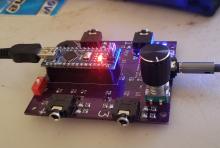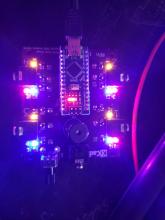Lots of things have happened with the keyer. I bought rotary encoders and had boards made and populated one and it works like a champ. Only one small error on the board, and it's in the silkscreen so I'm going to ignore it, although you can see it in the photo above. So, if you have an interest, how can you get your own keyer?
Well, start at OSHPark and get yourself some of the boards:
The source for the firmware is on Github


